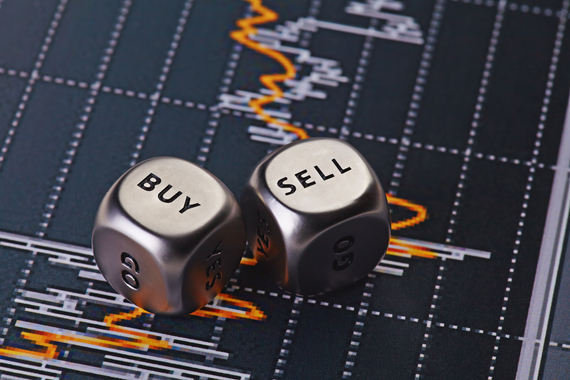Image Source
Buying, selling and saving investments can be extremely confusing and risky. It is important to understand the basic knowledge of exchanging money, commodities, etc. before diving in too deep. There are many intrinsic details that involve investing and many different types of investments. This article will mainly focus on stock market investments and the basic principles of buying and selling those investments.
When and What to Buy - Before buying, it is important to be knowledgeable about your investment. The best way to begin is to thoroughly research stocks, mutual funds, ETFs, bonds, etc., and the trends that are present in each of these categories. Then, invest in what you know and are familiar with so that you are more comfortable with following the trends of your investment. Simply put: buy low, sell high.
When an investment is doing poorly, buy it at a low price, but only if the research indicates potential growth in the future. While buying low may seem counterintuitive, it is a key method to making a profit. Then, when the investment has increased in value over time, sell that same investment for a profit. The market is unpredictable. There are no guarantees that one particular investment will be successful. That is why it is important to diversify your investments.
When to Sell - Sell when your investment's value is high. This is why it is vital to diversify your investments. In order to sell when an investment is high, you have to invest in a variety of commodities. If your investments are diverse, when one investment plummets, another may rise. If you invest entirely in one company, Exon Mobile for example, and that company is not doing well, you have no other investments to turn to for-profit. On the other hand, if you invest in a variety of both the U.S. and foreign exchange, your chances are higher of being able to sell high for one investment when another investment is at a low value.
Buy and Hold - Don't panic. It is important to buy low and wait until your investment's value is high before you sell. It is very common for people to panic when their investments are plummeting in value or have maintained a steady, low value for several years. Remember that long-term investments equal positive returns. An average return of over 20 years is almost always positive. Most people only need to wait for 3 to 5 years for a stock to rise to its full potential. If you sell low, you will lose money that patience might have awarded if you had waited to sell at a higher value. Keep yourself educated and knowledgeable about your investment by reading a company's annual report, reading its most recent news releases or going online to investigate recent presentations to investors. Another common practice is to invest in dividend stocks--normal stocks that issue a cash return to the holder, sometimes several times per year.
Brokers - For large sums of money and large companies that make prominent investments, brokers can help regulate those investments. If a successful company wanted to partake in Forex trading, it would be prudent to go through a regulated forex broker who is well-educated in the market. This can decrease the risk of loss when investing in larger sums. It is estimated that the average volume traded in forex markets per day is more than $5 trillion. When dealing with millions of dollars every day, it is important to hire brokers that are experienced and trustworthy. Also, keep in mind that a broker will require a percentage of your profit. However, their knowledge and expertise may certainly be worth the extra cost when dealing with billions of dollars.
It can be tricky navigating the market. Even with the above tips, there is no fool-proof method. There are always risks involved. The current movement is not always an indicator of future movement. The value of an investment can change in varying degrees, daily. When dealing with large sums, having a broker can lessen some of the worry and responsibility that comes with the risks involved. Again, it is also very important to research what you want to buy before you decide to purchase it. At the end of the day, it is the steps you take before you invest that will determine the rate of your success.

